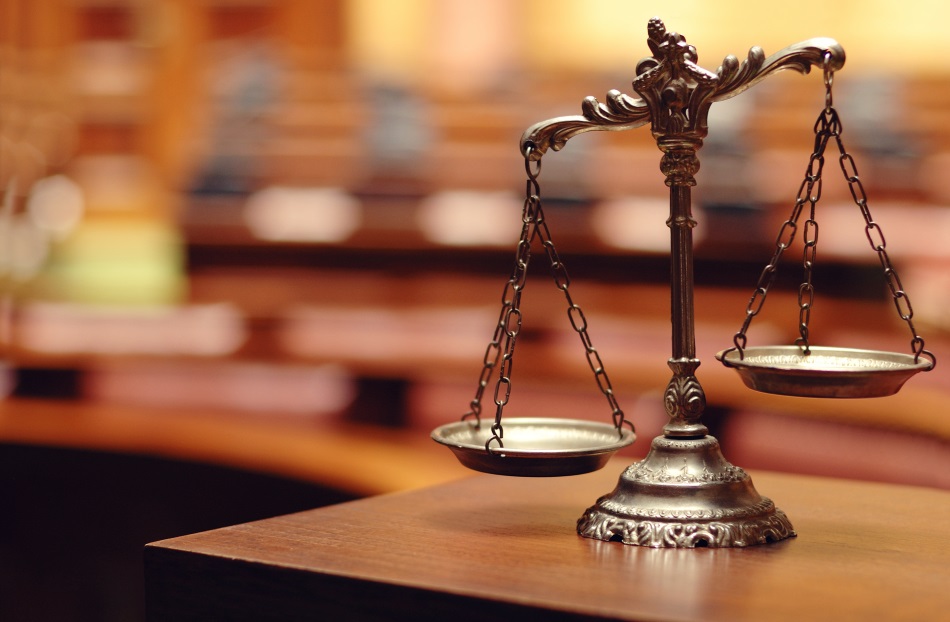CHAPTER 4: COURT PROCEDURES
I. PROCEDURAL RULES. Understanding and meeting procedural rules are essential in the litigation process.
II. Consulting an Attorney. This is key because the attorney will represent your interest. Legal fees and all settlement
issues should be thoroughly discussed with the attorney.
III. JUDICIAL PROCEDURE: FOLLOWING A CASE THROUGH THE COURTS.
A. Background. In this section of the chapter, we are asked to follow a case through the court system.
Formats or procedures have been established so that a case may progress smoothly through the court
system.
B. Stage One: The Pleading.
1. The complaint and the answer make up the pleadings.
2. The suit starts when Kirby files the complaint. The complaint will contain 3 things (see exhibit
4-3, page 67):
a. A short statement of the grounds for jurisdiction. Items 1 and 2
b. A short and plain statement of the facts necessary to show that the plaintiff is entitled to
relief. Items 3 and 4
c. A statement of the remedy the plaintiff is seeking. Last paragraph.
3. Service of Summons. After the complaint is filed, the Sheriff serves a summons and a copy of
the complaint on the defendant (in this case, Jones).
See Exhibit 2-6 on page 32. The summons:
a. notifies Jones that he is prepare an answer to the complaint.
b. The summons informs Jones that failure to answer will result in a judgment by default
for the plaintiff.
4. Answer and Counterclaim is the Next Step. The answer either admits the statements or
allegations set out in the complaint or denies them and sets out any defenses that the defendant
may have.
a. If Carvello admits to all of the allegations in Kirby=s complaint, a judgment will be
entered for Adams.
b. If Carvello denies Kirby=s allegations, the matter will go to court.
5. Answer and Affirmative Defenses. Carvello could admit the truth of Kirby complaint but raise
new facts.
D. The Next Stage is Possible Dismissible and Judgment before Trial.
1. Motion for Judgment on the Pleadings. This motion is made after the pleadings are closed (i.e.
after the complaint, answer and any counterclaims).
a. This motion may be used when no facts are disputed, and only questions of law are at
issue.
14
2. Motion for Summary Judgment. This is similar to a "motion for judgment on the pleadings."
a. The only difference is that a motion for summary judgment may be supported by
evidence outside of the pleading.
(1) For Motion on the pleadings, you can only look at the pleading.
E. Discovery. Before a trial begins, the parties will want to gather information about the case. This is
called "discovery." There are many devices which may be used to obtain information about a case
including:
1. Depositions.
A deposition is a device by which one party may require another party or witness
to appear before a court reporter and answer oral questions put to him by the opposing lawyer.
a. The questions and answers are taken down, sworn to and signed.
2. Interrogatories. Interrogatories are written questions to a party. AFTER the answers are
prepared, they are signed under oath.
a. Interrogatories are directed only to the parties; not the witnesses.
3. Physical and Mental Examinations. When the physical or mental condition of one party is in
question, the opposing party can ask the court to order a physical or mental examination. The
party must also show;
a. good cause for the examination
b. notice is given to the person to be examined.
c. the court order specifies the time, place, manner and scope of the examination.
IV. PRETRIAL HEARINGS. Either party may request a pretrial hearing.
A. Purpose. The purpose of the pretrial hearing is to identify the matters that are in dispute and to plan the
course of the trial.
B. This is not a mechanism for the parties to settle their disputes.
V. JURY TRIAL.
A. Purpose. The purpose of any trial is to persuade the judge or jury that your facts are more truthful and
accurate than the opposing lawyer.
C. 7th Amendment. The 7th amendment to the Constitution establishes the right to a jury trial.
B. A trial can be held with or without a jury.
1. If there is no jury, the judge determines the truth of the facts alleged in the case.
2. The right to a jury trial does not have to be exercised and many cases are tried without juries.
VI. JURY SELECTION.
A. General Rule. The general rule is that all persons are qualified to serve as jurors and to be included on
the jury list.
15
B. First stage - Assembling a pool of jurors for the particular case. Normally a pool of jurors is selected
from voting lists or city directories.
1. Exempt individuals are eliminated. Exempt individuals include lawyers, doctors, teachers, etc.
C. Second Stage - Assembling a jury panel for the particular case. From the list of nonexempt jurors, a
panel of jurors is selected to try the case
1. The selection process is called voir dire examination.
a. The jurors are called into the courtroom and examined by the lawyers and in some cases
by the judge.
b. Each side has an unlimited number of challenges for cause (e.g. a juror is employed by
one of the parties).
c. Each side has a "limited" number what is called "peremptory challenges. Under this
method, a party can disqualify a juror for no reason at all.

